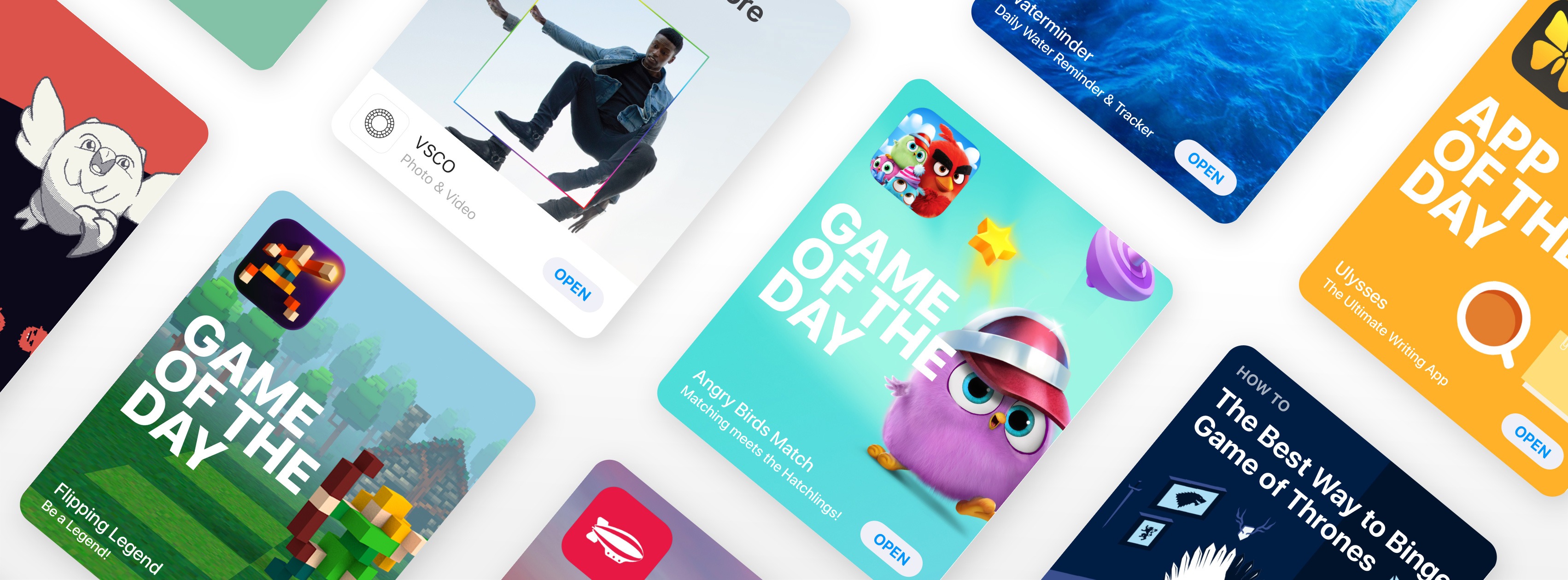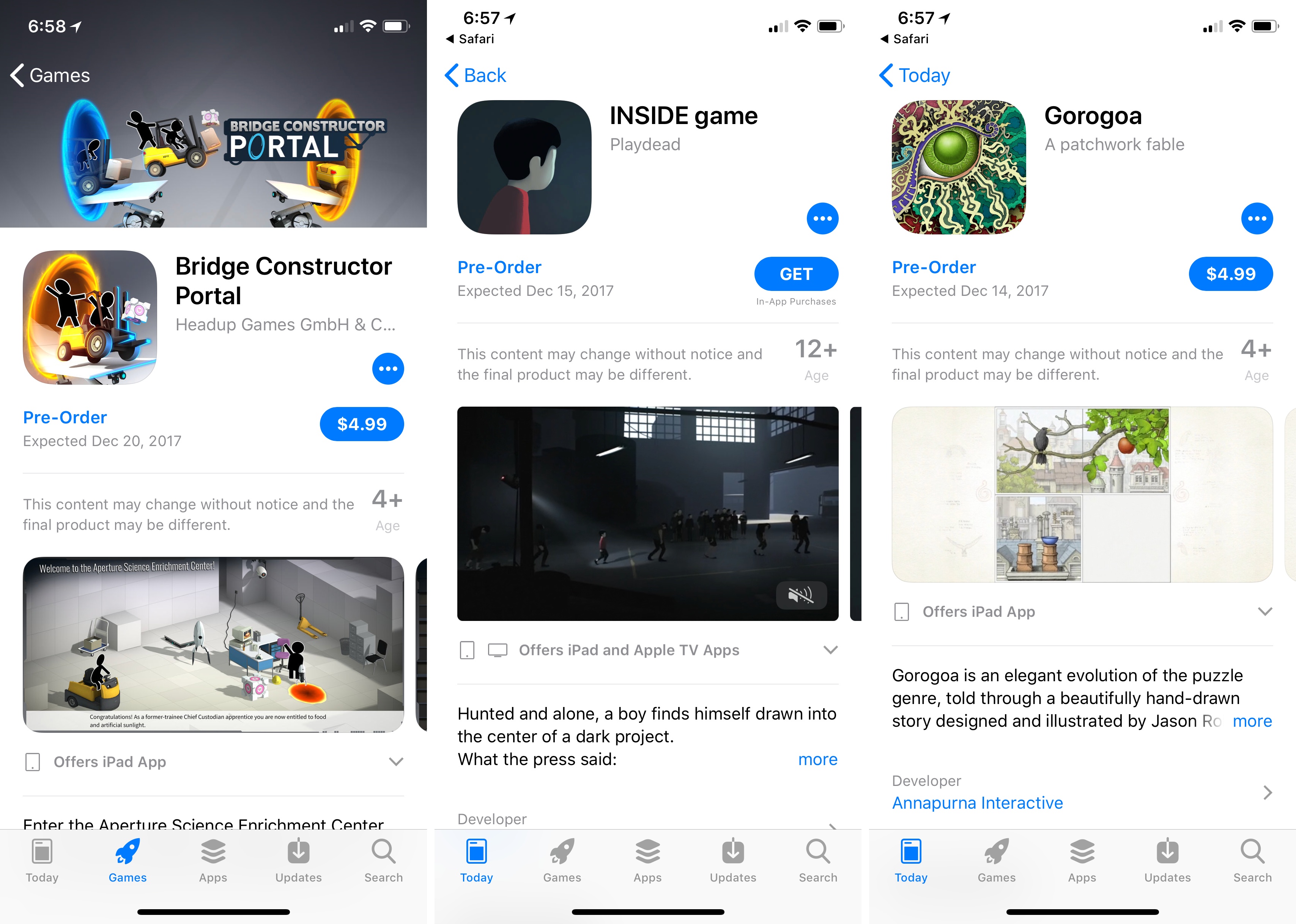In a press release, Apple today announced iOS 11.3, the third major update to iOS 11 set to be released in beta for developers later today, and launching to the general public this Spring. iOS 11.3 will improve upon iOS 11 and features that debuted alongside the iPhone X with new Animoji, a major upgrade to ARKit, the ability to store health records in the Health app, plus other improvements for built-in system apps.
Posts tagged with "developers"
Apple Announces iOS 11.3 with ARKit 1.5, New Animoji, Health Records, Music Videos, and More
Reverse-Engineering the iPhone X Home Indicator Color→
I noticed an unusual behavior of the iPhone X home indicator while working on my most recent app. The app’s background near the home indicator is purple. When the app launches, the home indicator is very light gray.
But something odd happened when I pressed the app’s “share” button, which opened a default iOS activity view (aka “share sheet”). When I hit the “cancel” button to close the activity view, the home indicator animated to a dark gray color.
Home indicator starts light, then a share sheet passing makes it dark.
Even though the background color was exactly the same, the light-colored activity view passing underneath caused the home indicator to change color. The only way to get the home indicator back to its original color was to leave the app and come back.
I had never seen this before, and it prompted my curiosity.
Fascinating study of the iPhone X’s Home indicator behavior. I had no idea that the indicator adapted to background color changes within the bar itself. Don’t miss the second (and more technical) half of the story with Gitter’s detailed color tests.
Apple Announces Record Holiday App Store Sales→
During the week beginning on Christmas Eve, the App Store sold $890 million of apps to a record number of customers. In a press release today, Apple revealed that on New Year’s Day alone, customers bought another $300 million of apps.
“We are thrilled with the reaction to the new App Store and to see so many customers discovering and enjoying new apps and games,” said Phil Schiller, Apple’s senior vice president of Worldwide Marketing. “We want to thank all of the creative app developers who have made these great apps and helped to change people’s lives. In 2017 alone, iOS developers earned $26.5 billion — more than a 30 percent increase over 2016.”
That’s a big increase over 2016 and with the tenth anniversary of the App Store on the horizon, the App Store is closing in on a big milestone. Since the App Store launched in July 2008, developers have earned over $86 billion. If App Store sales continue to grow at a pace similar to 2017, developer earnings should top $100 billion just in time for the anniversary.
Apple also stated that over 2,000 ARKit-enabled apps are available in the App Store, contrary to estimates by research firm Apptopia that fewer than 1,000 ARKit apps are available.
Apple Updates and Expands App Store Review Guidelines to Address Pre-Orders, Loot Boxes, VPNs, and More
Just before the annual holiday shutdown of the App Store, Apple has revised its App Store Review Guidelines to address new App Store functionality like Pre-Orders and clarify or expand a handful of existing guidelines, including the creation of apps from templates and how ’loot boxes’ and VPNs should be handled. Below is a summary of the major changes to the Guidelines. To see all the changes, check out Rich Hong’s App Store Review Guidelines gist on GitHub.
How to Design for iPhone X (Without an iPhone X)→
Great analysis by Sebastiaan de With on how they redesigned Halide for the iPhone X (the app indeed turned out to be one of the best iPhone X app updates we’ve seen so far):
Design for ergonomics. On regular iPhones, you have to do much less as a designer to optimize ergonomics. The iPhone X requires you to think about comfortable button placement and usability. Ergonomics is more than just tapping, but also swiping and other gestures. Lay out your UI so all actions are accessible and as comfortably usable as possible.
It’s a whole new device: Design for it. Everyone can stretch an app out to a larger screen, but just like the iPad, a fresh approach is not only welcomed but helps you stand out in the App Store. This is a great time to validate your current design. Are your approaches still valid? Is there a better solution possible? You might come to some valuable insights that you can apply to all your designs, not just the ones for the shiny new device.
If you’re a developer working on iPhone X UI updates, don’t miss Sebastiaan’s map visualization of the device’s display.
Apple Opens App Pre-Orders to All Developers
You may recall that when Super Mario Run was announced in 2016, customers could request notification of its release, which was a first at the time on the App Store. Now, all developers can do something similar by offering their apps for pre-order. According to iTunes Connect’s Resources and Help documentation:
Now you can make your new apps available for pre-order on all Apple platforms. Customers can see your product page and order your app before it’s released for download. Once your app is released, customers will be notified and your app will automatically download to their device. For paid apps, customers will be charged before download.
The process for submitting an app for pre-order seems relatively straight-forward:
To make your new app available for pre-order:
- From the homepage, click My Apps, select the app, and select Pricing and Availability in the left column. You’ll see the Pre-Orders section if your app has never been published on the App Store.
Select Make available for pre-order, choose a date to release your app for download, then click Save in the upper-right corner. The release date must be at least two days in the future, but no more than 90 days in the future.
Submit your app for review.
Once your app is approved and you’re ready to make it available for pre-order, return to Pricing and Availability, confirm the date your app will be released for download, and click Release as Pre-Order in the upper-right corner.
In addition to offering apps for pre-orders, Apple will report pre-orders as part of the Sales and Trends section of iTunes Connect. Apple has also included an FAQ with further information about the pre-order process.
It’s been about a year since Apple tested the pre-release notification waters with Super Mario Run and it’s nice to see that it’s been opened up to all developers who can use it to get customers excited about their apps ahead of launch.
Update: According to a new webpage published by Apple that summarizes the pre-order program, it also applies to macOS and tvOS apps.
In addition, Apple has added a ‘Pre-Orders’ section to the Games tab of the App Store, which currently includes five games. No similar section has been added to the Mac App Store or Apple TV App Store.
Apple Expands Search Ad Offerings with Search Ads Basic
Today, Apple introduced a new search ad product called Search Ads Basic. The existing search ad service, which was introduced a little over a year ago, has been renamed Search Ads Advanced.
Search Ads Basic offers fewer of the advanced options and tracking available in Search Ads Advanced and spending is capped at $5,000 per month, but developers only pay for installations generated by their search ads. In contrast, developers pay every time someone taps on an ad under the Search Ads Advanced program, whether or not the tap results in a purchase. To get started, all that is needed is to pick the app to be advertised, set a spending budget, and choose a maximum per-user installation cost, for which Apple provides a suggested maximum based on historical App Store data.
Apple is positioning Search Ads Basic as an alternative for developers who don’t have the time to fiddle with the more sophisticated options available with Search Ads Advanced. There is no doubt the process is simple. I set up a campaign for my app Blink in less than a minute.
With a $5,000 per month spending limit the new program also seems tailored to smaller developers who may be uncomfortable paying for taps or managing the more complex options of a Search Ads Advanced campaign. Although larger development shops are not precluded from using Basic, the spending limit should discourage larger companies with big advertising budgets.
Currently, Search Ads Basic is limited to US App Store, but it will be rolling out to the stores in additional countries later. As it did last year, Apple is sending email messages to developers offering a $100 credit to try Search Ads.
Animoji and AvatarKit→
Developer Simon Støvring has put together SBSAnimoji, an iPhone X app that uses Apple’s private AvatarKit framework to let you record Animoji videos that aren’t limited to 10-second clips or the Messages app. You can download the project from GitHub and install it with Xcode on your iPhone X.
It’s fascinating to consider how Animoji could expand beyond iMessage through AvatarKit, or how the same tech that powers the framework could be used for the creation of different system avatars not necessarily modeled after popular emoji. Also: wouldn’t it be interesting to have AvatarKit as a proper API for third-party developers?
Introductory Pricing Coming to App Subscriptions
Earlier today, Apple released iOS 11.2 beta 2 to developers. The release notes accompanying the beta include the following announcement:
Soon, you’ll be able to offer new customers a discounted introductory price for your auto-renewable subscriptions on the App Store. iOS 11.2 introduces new classes … and new properties … to provide details on the introductory pricing and billing period you’ve selected for your auto-renewable subscriptions. You’ll be able to configure introductory pricing on your in-app purchase page in iTunes Connect soon.
Auto-renewing subscriptions were made available to all app developers with iOS 10 and already include the option to offer a free trial. With iOS 11.2 though, developers will have added flexibility to help them attract customers.






